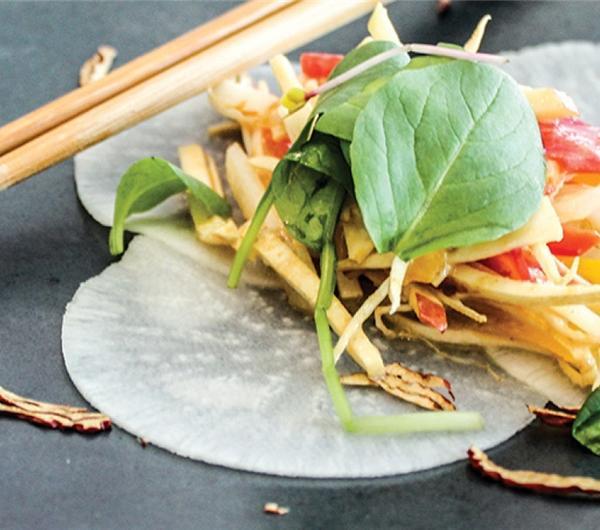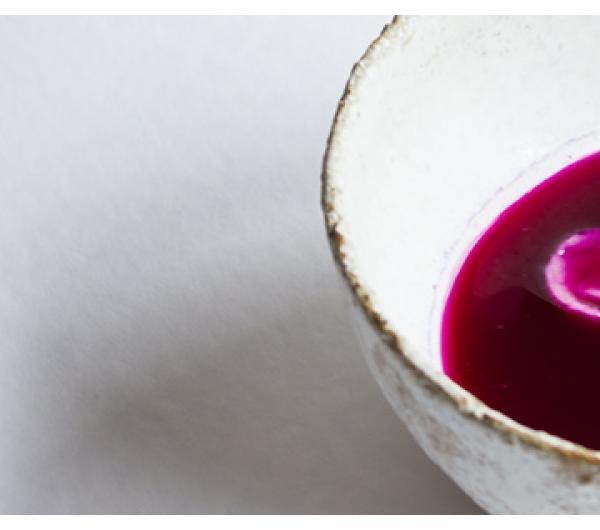Wykonanie

My name is Magdalena Tomaszewska-Bolałek. I live in Warsaw (Poland). I am a Food Studies scholar and a journalist. I also work for a company that deals with Polish-Japanese economical and cultural exchange. I obtained MA from the Department of Japanese Studies (Warsaw University, Poland). I also finished postgraduates studies: Journalism and Social Communication (Warsaw University) and Fashion Management (Kozminski University, Poland). My PhD thesis (University of Social Sciences and Humanities) was about history and function of Japanese sweets. My research focuses on world’s food culture and Asian culture, food representations in culture, neurogastronomy, food tourism, culinary diplomacy, design and pop culture. I am an author of four books Japanese Culinary Traditions(2006), The Chinese Zodiac Animals in Japanese Culture (2007), Japanese Sweets (2013) and The Culinary Traditions of Korea (2015). Moreover, I am a culinary blogger. On my blog named Kuchniokracja I present recipes and articles about food culture. The blog is in Polish with Google Translate option available. I speak Polish (native), English, French and Japanese. In addition, I have basic knowledge of Bengali and Sanskrit. I am a coordinator of postgraduate studies Food Studies at University of Social Sciences and Humanities in Warsaw. I write, do lectures about food culture and lead cooking workshops.CONTACT:
[email protected]
Book The Culinary Traditions of Korea is a colorful journey trough
ages and regions. It presents all this things, which makes Korean cuisine so tasty, healthy and remarkable. Touch of the season, fresh, good quality ingredients, wisdom of many generation, skills of well trained chef, spirit and heart this are the main ingredients of well composed dishes that stays forever in peoples mind. No matter if it is a
home made comfort food or Michelin star restaurant Korean food always tastes better when is shared with others. By presenting culinary art of Korean Peninsula publication The Culinary Traditions of Korea shows also the spirit of Korean nation and culture of Korea.

Japanese Sweets is probably the first monograph about Japanese confectionery written in European language, that presents history and role of sweets in Japanese culture and life. The book is enriched with nearly 300 photos and 24 recipient for Japanese sweets, both traditional and modern. It was announced the Best in Poland in 2013 in three categories: Best Japanese Cuisine Book, Best Culinary History Book and Best Pastry Sweets Book and got first place in Gourmand World Cookbook Awards in category: Best Japanese Cuisine Book. T he results was announced on 20th May 2014 at the annual Awards event, which took place at Beijing Cookbook Fair . The Gourmand World Cookbook Awards
were founded in 1995. It honors the best food and
wine books and are often compared by journalists to the „Oscars”.The Chinese Zodiac Animals in Japanese Culture is a book about the impact of Chinese zodiac on various fields of life in Japan. In publications there are information about traditional calendar, legends connected with twelve animals of zodiac, proverbs and presentations of zodiac animals in art and pop culture.Japanese Culinary Traditions is the first book about history of Japanese cuisine in Poland. The book focuses on the history of main ingredients and popular dishes, such as: sushi, tenpura and sukiyaki. It is also about the role of food in everyday life. Moreover, the book includes some information about table etiquette in Japan.My main articles and lectures:Forthcoming lectures:Foodies and Culinary Tourism (November 2015, IX Ogólnopolska Konferencja „Kultura i turystyka – wokół wspólnego stołu”, Łódź).Lectures:Disgusting Asian Food – China, Korea, Japan, Vietnam (June 2015, A FE! Społeczno-kulturowe konteksty wstrętu i obrzydliwości, SWPS, Warsaw).Sushi History (14th of May 2015, Food Seminar, Polish Academy of Sciences, Warsaw).Sushi – From a Method of Food Preservation to a Global Dish, (
March 2015, First International Conference on Food History and Food Studies, Institut Européen d’Histoire et des Cultures de l’Alimentation Université de Tours).New Opportunities for Promotion Food in Europe Based on Food Tourism in Japan, (16th September 2014, The European Union and
Asia. Perspectives, Challenges and Opportunities, Kozminski University, Warsaw, Poland).
Homo Gourmand and
Homo Cooking: Two Main Culinary Tribes of the Internet Era, (5th September 2014,
SIEF 20th International Ethnological Food Research Conference, Łódź).The way to a someone’s heart is through his stomach – culinary art and customs in Far Eastern Counties and its role in building multicultural dialogue (9th April 2014, The First Far Eastern Meetings in Sosnowiec, Poland) Przez żołądek do
serca – kuchnia i obyczaje stołowe w krajach Dalekiego Wschodu a budowanie dialogu międzykulturowego .Rice in Asian cuisine and culture (China, India, Japan, Korea, Vietnam), February 2014,
Ryż w kulturze i kuchni Azji (Chiny, Indie, Japonia, Korea, Wietnam).Thousands years of fusion cuisine, November 2013, Tysiące lat tradycji kuchni fusion .Gothic in Japanese popculture, April 2009, Gotyk w japońskiej popkulturze .The portrait of Japanese success woman in woman’s press, TV series and comics,
March 2007, Obraz japońskiej kobiety sukcesu w prasie kobiecej, serialach telewizyjnych i komiksach .Articles and books:Meat in Traditional Asian Art – India and Japan , in press,
Mięso w tradycyjnej sztuce azjatyckiej – Indie i Japonia.
Homo Gourmand and
Homo Cooking: Two Main Culinary Tribes of the Internet Era, Food and the Internet, Peter
Lang – International Academic Publishers 2015.The Culinary Traditions of Korea, April 2015, Tradycje kulinarne Korei .Thousands years of fusion cuisine, September 2014,
Maska, Tysiące lat tradycji kuchni fusion.Color and shape – traditional aesthetics of Japanese pottery, April 2014,
Maska, Kolor i kształt – tradycyjna estetyka japońskiej ceramiki stołowej.Japanese Sweets, 2013, Japońskie
słodycze .Symbolism of some
plants patterns in Japanese art in book Artistic Tradition of Noneuropean Cultures, 2008, S ymbolika wybranych motywów roślinnych w sztuce japońskiej w książce Artystyczne tradycje pozaeuropejskich kultur .Shōji in book Japan Viewed Through Polish Eyes, 2008, Shōji w książce Japonia widziana oczami Polaków .The Chinese Zodiac Animals in Japanese Culture, 2007, Zwierzęta zodiaku w kulturze Japonii .Japanese Culinary Traditions, 2006, Tradycje kulinarne Japonii .


 My name is Magdalena Tomaszewska-Bolałek. I live in Warsaw (Poland). I am a Food Studies scholar and a journalist. I also work for a company that deals with Polish-Japanese economical and cultural exchange. I obtained MA from the Department of Japanese Studies (Warsaw University, Poland). I also finished postgraduates studies: Journalism and Social Communication (Warsaw University) and Fashion Management (Kozminski University, Poland). My PhD thesis (University of Social Sciences and Humanities) was about history and function of Japanese sweets. My research focuses on world’s food culture and Asian culture, food representations in culture, neurogastronomy, food tourism, culinary diplomacy, design and pop culture. I am an author of four books Japanese Culinary Traditions(2006), The Chinese Zodiac Animals in Japanese Culture (2007), Japanese Sweets (2013) and The Culinary Traditions of Korea (2015). Moreover, I am a culinary blogger. On my blog named Kuchniokracja I present recipes and articles about food culture. The blog is in Polish with Google Translate option available. I speak Polish (native), English, French and Japanese. In addition, I have basic knowledge of Bengali and Sanskrit. I am a coordinator of postgraduate studies Food Studies at University of Social Sciences and Humanities in Warsaw. I write, do lectures about food culture and lead cooking workshops.CONTACT: [email protected]
My name is Magdalena Tomaszewska-Bolałek. I live in Warsaw (Poland). I am a Food Studies scholar and a journalist. I also work for a company that deals with Polish-Japanese economical and cultural exchange. I obtained MA from the Department of Japanese Studies (Warsaw University, Poland). I also finished postgraduates studies: Journalism and Social Communication (Warsaw University) and Fashion Management (Kozminski University, Poland). My PhD thesis (University of Social Sciences and Humanities) was about history and function of Japanese sweets. My research focuses on world’s food culture and Asian culture, food representations in culture, neurogastronomy, food tourism, culinary diplomacy, design and pop culture. I am an author of four books Japanese Culinary Traditions(2006), The Chinese Zodiac Animals in Japanese Culture (2007), Japanese Sweets (2013) and The Culinary Traditions of Korea (2015). Moreover, I am a culinary blogger. On my blog named Kuchniokracja I present recipes and articles about food culture. The blog is in Polish with Google Translate option available. I speak Polish (native), English, French and Japanese. In addition, I have basic knowledge of Bengali and Sanskrit. I am a coordinator of postgraduate studies Food Studies at University of Social Sciences and Humanities in Warsaw. I write, do lectures about food culture and lead cooking workshops.CONTACT: [email protected] Book The Culinary Traditions of Korea is a colorful journey trough ages and regions. It presents all this things, which makes Korean cuisine so tasty, healthy and remarkable. Touch of the season, fresh, good quality ingredients, wisdom of many generation, skills of well trained chef, spirit and heart this are the main ingredients of well composed dishes that stays forever in peoples mind. No matter if it is a home made comfort food or Michelin star restaurant Korean food always tastes better when is shared with others. By presenting culinary art of Korean Peninsula publication The Culinary Traditions of Korea shows also the spirit of Korean nation and culture of Korea.
Book The Culinary Traditions of Korea is a colorful journey trough ages and regions. It presents all this things, which makes Korean cuisine so tasty, healthy and remarkable. Touch of the season, fresh, good quality ingredients, wisdom of many generation, skills of well trained chef, spirit and heart this are the main ingredients of well composed dishes that stays forever in peoples mind. No matter if it is a home made comfort food or Michelin star restaurant Korean food always tastes better when is shared with others. By presenting culinary art of Korean Peninsula publication The Culinary Traditions of Korea shows also the spirit of Korean nation and culture of Korea. Japanese Sweets is probably the first monograph about Japanese confectionery written in European language, that presents history and role of sweets in Japanese culture and life. The book is enriched with nearly 300 photos and 24 recipient for Japanese sweets, both traditional and modern. It was announced the Best in Poland in 2013 in three categories: Best Japanese Cuisine Book, Best Culinary History Book and Best Pastry Sweets Book and got first place in Gourmand World Cookbook Awards in category: Best Japanese Cuisine Book. T he results was announced on 20th May 2014 at the annual Awards event, which took place at Beijing Cookbook Fair . The Gourmand World Cookbook Awards were founded in 1995. It honors the best food and wine books and are often compared by journalists to the „Oscars”.The Chinese Zodiac Animals in Japanese Culture is a book about the impact of Chinese zodiac on various fields of life in Japan. In publications there are information about traditional calendar, legends connected with twelve animals of zodiac, proverbs and presentations of zodiac animals in art and pop culture.Japanese Culinary Traditions is the first book about history of Japanese cuisine in Poland. The book focuses on the history of main ingredients and popular dishes, such as: sushi, tenpura and sukiyaki. It is also about the role of food in everyday life. Moreover, the book includes some information about table etiquette in Japan.My main articles and lectures:Forthcoming lectures:Foodies and Culinary Tourism (November 2015, IX Ogólnopolska Konferencja „Kultura i turystyka – wokół wspólnego stołu”, Łódź).Lectures:Disgusting Asian Food – China, Korea, Japan, Vietnam (June 2015, A FE! Społeczno-kulturowe konteksty wstrętu i obrzydliwości, SWPS, Warsaw).Sushi History (14th of May 2015, Food Seminar, Polish Academy of Sciences, Warsaw).Sushi – From a Method of Food Preservation to a Global Dish, (March 2015, First International Conference on Food History and Food Studies, Institut Européen d’Histoire et des Cultures de l’Alimentation Université de Tours).New Opportunities for Promotion Food in Europe Based on Food Tourism in Japan, (16th September 2014, The European Union and Asia. Perspectives, Challenges and Opportunities, Kozminski University, Warsaw, Poland).Homo Gourmand and Homo Cooking: Two Main Culinary Tribes of the Internet Era, (5th September 2014, SIEF 20th International Ethnological Food Research Conference, Łódź).The way to a someone’s heart is through his stomach – culinary art and customs in Far Eastern Counties and its role in building multicultural dialogue (9th April 2014, The First Far Eastern Meetings in Sosnowiec, Poland) Przez żołądek do serca – kuchnia i obyczaje stołowe w krajach Dalekiego Wschodu a budowanie dialogu międzykulturowego .Rice in Asian cuisine and culture (China, India, Japan, Korea, Vietnam), February 2014, Ryż w kulturze i kuchni Azji (Chiny, Indie, Japonia, Korea, Wietnam).Thousands years of fusion cuisine, November 2013, Tysiące lat tradycji kuchni fusion .Gothic in Japanese popculture, April 2009, Gotyk w japońskiej popkulturze .The portrait of Japanese success woman in woman’s press, TV series and comics, March 2007, Obraz japońskiej kobiety sukcesu w prasie kobiecej, serialach telewizyjnych i komiksach .Articles and books:Meat in Traditional Asian Art – India and Japan , in press, Mięso w tradycyjnej sztuce azjatyckiej – Indie i Japonia.Homo Gourmand and Homo Cooking: Two Main Culinary Tribes of the Internet Era, Food and the Internet, Peter Lang – International Academic Publishers 2015.The Culinary Traditions of Korea, April 2015, Tradycje kulinarne Korei .Thousands years of fusion cuisine, September 2014, Maska, Tysiące lat tradycji kuchni fusion.Color and shape – traditional aesthetics of Japanese pottery, April 2014, Maska, Kolor i kształt – tradycyjna estetyka japońskiej ceramiki stołowej.Japanese Sweets, 2013, Japońskie słodycze .Symbolism of some plants patterns in Japanese art in book Artistic Tradition of Noneuropean Cultures, 2008, S ymbolika wybranych motywów roślinnych w sztuce japońskiej w książce Artystyczne tradycje pozaeuropejskich kultur .Shōji in book Japan Viewed Through Polish Eyes, 2008, Shōji w książce Japonia widziana oczami Polaków .The Chinese Zodiac Animals in Japanese Culture, 2007, Zwierzęta zodiaku w kulturze Japonii .Japanese Culinary Traditions, 2006, Tradycje kulinarne Japonii .
Japanese Sweets is probably the first monograph about Japanese confectionery written in European language, that presents history and role of sweets in Japanese culture and life. The book is enriched with nearly 300 photos and 24 recipient for Japanese sweets, both traditional and modern. It was announced the Best in Poland in 2013 in three categories: Best Japanese Cuisine Book, Best Culinary History Book and Best Pastry Sweets Book and got first place in Gourmand World Cookbook Awards in category: Best Japanese Cuisine Book. T he results was announced on 20th May 2014 at the annual Awards event, which took place at Beijing Cookbook Fair . The Gourmand World Cookbook Awards were founded in 1995. It honors the best food and wine books and are often compared by journalists to the „Oscars”.The Chinese Zodiac Animals in Japanese Culture is a book about the impact of Chinese zodiac on various fields of life in Japan. In publications there are information about traditional calendar, legends connected with twelve animals of zodiac, proverbs and presentations of zodiac animals in art and pop culture.Japanese Culinary Traditions is the first book about history of Japanese cuisine in Poland. The book focuses on the history of main ingredients and popular dishes, such as: sushi, tenpura and sukiyaki. It is also about the role of food in everyday life. Moreover, the book includes some information about table etiquette in Japan.My main articles and lectures:Forthcoming lectures:Foodies and Culinary Tourism (November 2015, IX Ogólnopolska Konferencja „Kultura i turystyka – wokół wspólnego stołu”, Łódź).Lectures:Disgusting Asian Food – China, Korea, Japan, Vietnam (June 2015, A FE! Społeczno-kulturowe konteksty wstrętu i obrzydliwości, SWPS, Warsaw).Sushi History (14th of May 2015, Food Seminar, Polish Academy of Sciences, Warsaw).Sushi – From a Method of Food Preservation to a Global Dish, (March 2015, First International Conference on Food History and Food Studies, Institut Européen d’Histoire et des Cultures de l’Alimentation Université de Tours).New Opportunities for Promotion Food in Europe Based on Food Tourism in Japan, (16th September 2014, The European Union and Asia. Perspectives, Challenges and Opportunities, Kozminski University, Warsaw, Poland).Homo Gourmand and Homo Cooking: Two Main Culinary Tribes of the Internet Era, (5th September 2014, SIEF 20th International Ethnological Food Research Conference, Łódź).The way to a someone’s heart is through his stomach – culinary art and customs in Far Eastern Counties and its role in building multicultural dialogue (9th April 2014, The First Far Eastern Meetings in Sosnowiec, Poland) Przez żołądek do serca – kuchnia i obyczaje stołowe w krajach Dalekiego Wschodu a budowanie dialogu międzykulturowego .Rice in Asian cuisine and culture (China, India, Japan, Korea, Vietnam), February 2014, Ryż w kulturze i kuchni Azji (Chiny, Indie, Japonia, Korea, Wietnam).Thousands years of fusion cuisine, November 2013, Tysiące lat tradycji kuchni fusion .Gothic in Japanese popculture, April 2009, Gotyk w japońskiej popkulturze .The portrait of Japanese success woman in woman’s press, TV series and comics, March 2007, Obraz japońskiej kobiety sukcesu w prasie kobiecej, serialach telewizyjnych i komiksach .Articles and books:Meat in Traditional Asian Art – India and Japan , in press, Mięso w tradycyjnej sztuce azjatyckiej – Indie i Japonia.Homo Gourmand and Homo Cooking: Two Main Culinary Tribes of the Internet Era, Food and the Internet, Peter Lang – International Academic Publishers 2015.The Culinary Traditions of Korea, April 2015, Tradycje kulinarne Korei .Thousands years of fusion cuisine, September 2014, Maska, Tysiące lat tradycji kuchni fusion.Color and shape – traditional aesthetics of Japanese pottery, April 2014, Maska, Kolor i kształt – tradycyjna estetyka japońskiej ceramiki stołowej.Japanese Sweets, 2013, Japońskie słodycze .Symbolism of some plants patterns in Japanese art in book Artistic Tradition of Noneuropean Cultures, 2008, S ymbolika wybranych motywów roślinnych w sztuce japońskiej w książce Artystyczne tradycje pozaeuropejskich kultur .Shōji in book Japan Viewed Through Polish Eyes, 2008, Shōji w książce Japonia widziana oczami Polaków .The Chinese Zodiac Animals in Japanese Culture, 2007, Zwierzęta zodiaku w kulturze Japonii .Japanese Culinary Traditions, 2006, Tradycje kulinarne Japonii .






